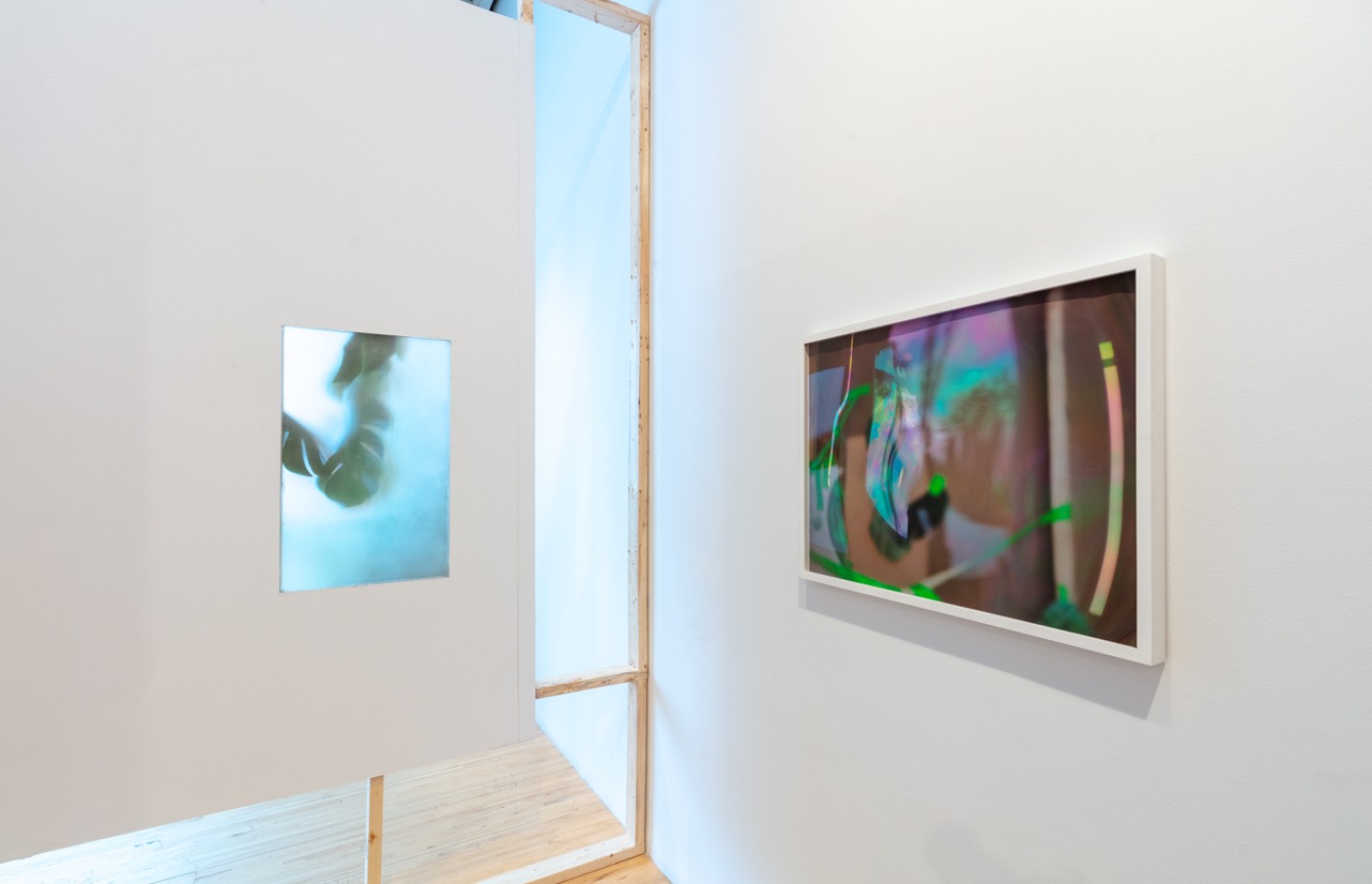
The Refuge of Colour
Mathieu Cardin
- Exhibition
The installation The Refuge of Colour is a narrative space. It is practicable and is similar in form to the landscape.
The installation The Refuge of Colour is an immersive space. It is disparate and similar in form to the fake.
It is black that is The Refuge of Colour.
The installation should have been called: The Precession of the Substance. This precession is that of emptiness and its return. The one that inflates desire through repetition.
Black is the Refuge of Colour is an exhibition in black, black and black. With a lot of white.
Black is the Refuge of Colour is the natural extension of the production activity that finds an outlet in an imagery that aspires to recycle itself in its own mythology.
—
Colour doesn’t exist. Or, rather, colour doesn’t exist anymore. Here, it is diverted, taking refuge in the emptiness of matter. With Le refuge de la couleur, Mathieu Cardin creates two separate ecosystems, one contemplative, the other immersive, deployed in parallel between two bifurcated and mapped-out spaces. The visitor is thus drawn into perpetual transition, confronted with the emergence of conceptual and manual proposals that seem to weaken the integrity of matter itself, beyond its representation. A master of creative misuse, Cardin offers the viewer picturesque scenes made up of surprising and sometimes incongruous arrangements of manufactured and machine-milled elements. More captivating and disconcerting than extravagant as such, the installations presented in this exhibition are largely devoid of the exuberance and overflowing of multicoloured objects that have come to characterize Cardin’s work.
In the gallery space brimming with natural light, Cardin presents an expansive, seemingly semi-artificial ground relief nested into the architecture of the space. Cosmic, arctic, arid or bucolic — no one single adjective seems to adequately describe the type of landscape presented to us here. Cardin simultaneously works within the landscape tradition and strives to liberate his artworks from it, deconstructing and reconstructing its codes into a dreamlike illusion. In sum, Cardin’s installation offers a new type of apperception in regard to the use of landscape. The room’s fenestration allows the installation to reveal itself both inside the space, and from the outside. The artwork thus vacillates between in situ and ex situ, constantly shifting our visual perception and contemplation of the work. Between these two points, there is a transposition from interior to exterior; the temporality of this movement alternately disrupts the viewing experience, or, in contrast, enables observation. The monochromatic landscape, composed of countless shades of grey, constantly fluctuates with the changing light. On the wall, the clouded imagery of a hazy sky amplifies the perceptive effect of the installation, now a dreary vastness of far-off nature, both utopian and dystopian.
In the adjoining gallery, Mathieu Cardin creates a bewildering and ambivalent space, with observation points concealed throughout two symmetrical, incompletely built partitioning walls — an architecture within architecture. Here, the artist continues to destabilize viewers, confounding their expectations toward his two and three-dimensional constructions. As we move through this immersive space, our ability to understand Cardin’s simulacra diminishes, becoming confused. The atmosphere of intrigue is exacerbated by photographs and drawings of elliptical objects found on both sides of the partitions. Behind the scenes, distinct representations intermittently reveal themselves, amplifying our predisposition to interpret this plethora of objects as fragments of landscape. Close by, a fountain trickles gently, lending a sense of lightness to the density of the installation and the opacity of its materials.
In Le refuge de la couleur, Cardin invites the viewer to observe, examine, and absorb these (un)real spaces, dimly chromatic landscapes and their charged visual riddles. Cardin’s universe is a carefully circumscribed and conceptual one; in short, a captivating hidden agenda.
— Jean-Michel Quirion
Originally from Urville in France, Mathieu Cardin graduated from Concordia University with a Master of Fine Arts (2014) and has since presented a dozen solo exhibitions and participated in a number of group exhibitions, as well as artist residencies in France, Mexico, Italy, Quebec, and the Symposium d'art contemporain de Baie-Saint-Paul (2015).



